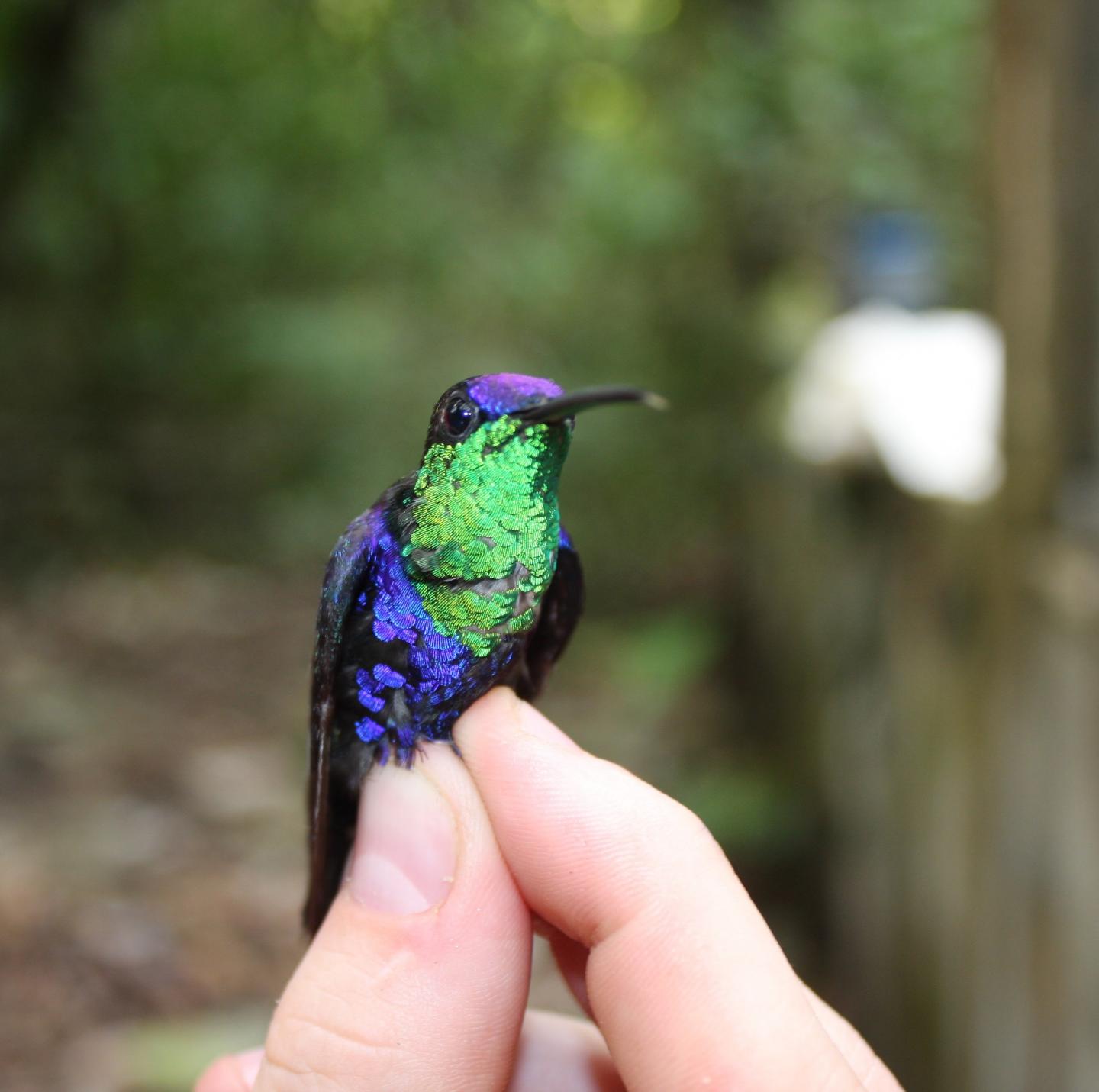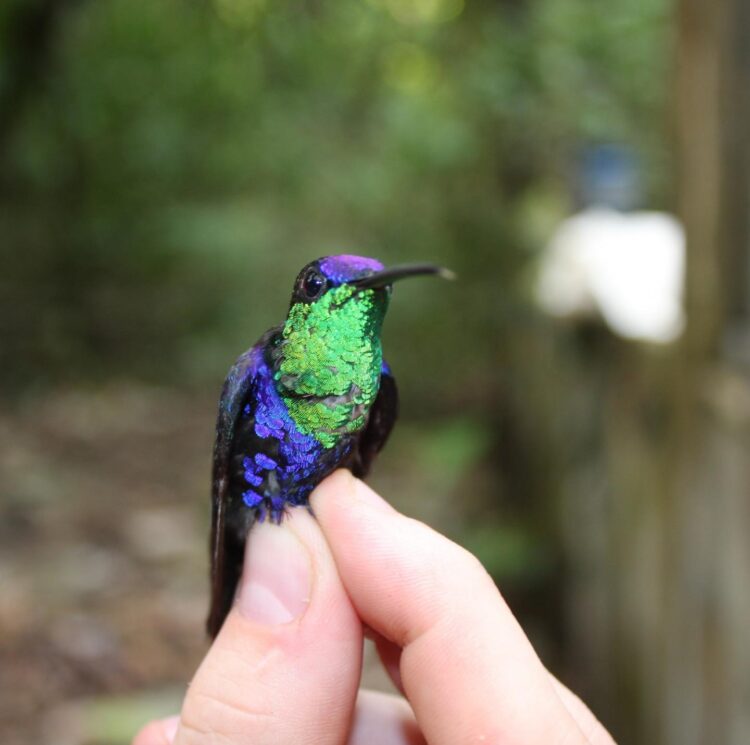
Credit: Photo by Henry Pollock, University of Illinois.
URBANA, Ill. – When the tree fell that October in 2015, the tropical giant didn’t go down alone. Hundreds of neighboring trees went with it, opening a massive 2.5-acre gap in the Panamanian rainforest.
Treefalls happen all the time, but this one just happened to occur in the exact spot where a decades-long ecological study was in progress, giving University of Illinois researchers a rare look into tropical forest dynamics.
“I’ve been walking around that tree for 30 years now. It was just humongous,” says Jeff Brawn, Professor and Stuart L. and Nancy J. Levenick Chair in Sustainability in the Department of Natural Resources and Environmental Sciences at Illinois. “Here we are, running around on this plot for years and all of a sudden I couldn’t even find my way around. We just lucked into it.”
What’s lucky is that Brawn and his colleagues had amassed decades of data on the bird community in that exact spot, meaning they had a clear before-and-after view of what a treefall could mean for tropical birds.
This particular gap meant hummingbirds. Lots and lots of hummingbirds.
“After the treefall, we saw a very large spike in the total number of hummingbird species,” says Henry Pollock, a postdoctoral scholar working with Brawn and lead author on a study published in the Journal of Field Ornithology. “Within the previous 25 years of the study, we had only documented three or four hummingbird species, and they were usually present in low numbers. There was one species, the snowy-bellied hummingbird, which we had never captured on either of our two plots in 25 years of sampling. The year after the treefall happened, we got 16 unique individuals of this one species, and total diversity of hummingbirds more than doubled.”
The gap also attracted fruit-eating birds. The researchers documented a doubling of this group compared to pre-treefall numbers, with certain species being more than three times as abundant. Other species, including the thick-billed seed-finch, which typically inhabits grasslands, appeared as if out of thin air.
“They just swooped in,” Brawn says. “It’s analogous to a backyard bird feeder. As soon as you put one in, you’ll see species you’ve never seen before.”
And then, almost as quickly, the birds disappeared.
Within one to four years, depending on the species, the birds returned to pre-treefall numbers or were not detected again.
“What that suggests is these birds are incredibly mobile and opportunistic,” Pollock says. “They are probably just cruising around the landscape prospecting for their preferred food sources and habitats. Given the sheer size of this gap, it acted as a sort of magnet, pulling in species from potentially kilometers away. I mean, 16 snowy-bellied hummingbirds and we’ve never caught one before? It’s pretty astounding.”
Treefalls are a common and necessary occurrence in forests all over the world. As sunshine streams in from above, trees hunkered down in the understory finally get their chance to rise. Basking in the suddenly resource-rich environment, tropical trees and other plants produce nectar-filled flowers and fruit, important food sources for birds and other animals.
Previous research has hinted at how important these food sources are for tropical birds, but no one had documented before-and-after differences until now. Instead, researchers typically compared treefall gaps with intact forest areas at a single time point. That approach has its uses, but it can’t capture what Brawn and Pollock found: just how quickly the birds arrived on the scene, and how quickly they left.
“I was just really just astonished at how quickly and how efficiently these birds seem to be able to find and exploit a new source of food,” Brawn says.
Gaps don’t stay open long in the tropics. Understory trees shoot up, elbowing each other out of the way to take the top spot. Soon, there’s no evidence a gap – or its riotous array of feathered occupants – was there at all.
As short-lived as they may be, treefall gaps represent critical opportunities for species turnover, especially in the tropics where forest fires are comparatively rare.
“This kind of periodic disturbance is probably necessary for these birds to persist in the landscape matrix,” Pollock says. “That’s true for many organisms and ecosystems; our study provides evidence to back that up in these birds.”
###
The article, “Rapid colonization and turnover of birds in a tropical forest treefall gap,” is published in the Journal of Field Ornithology [DOI: 10.1111/jofo.12328]. Authors include Henry Pollock, Todd Jones, Corey Tarwater, Elise Nishikawa, and Jeffrey Brawn. The Smithsonian Tropical Research Institute supported this research. The Department of Natural Resources and Environmental Sciences is in the College of Agricultural, Consumer and Environmental Sciences at the University of Illinois.
Media Contact
Lauren Quinn
[email protected]
Original Source
https:/
Related Journal Article
http://dx.





